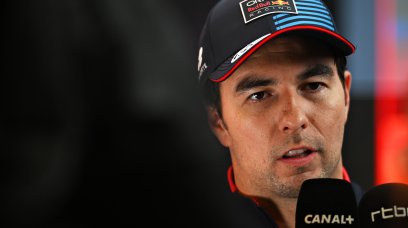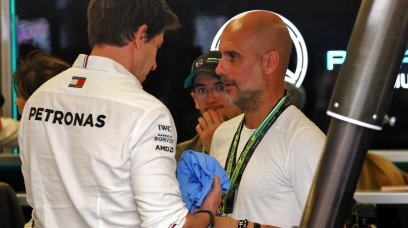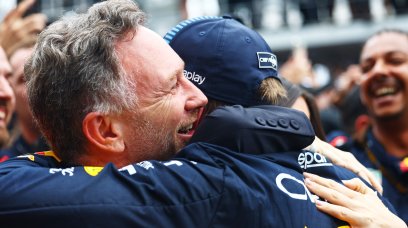In Formula 1, the unwritten, but always respected law to obtain results is to be perfect in every area from the car design concept to trackside operations so that the full potential of the package can be exploited. If we look back to the 2023 Italian Grand Prix at Monza, we could say this axiom helped Red Bull win its 14th race from the 14 held in this season and Max Verstappen his 10th straight. But Verstappen had to work for this win, with it being far from the case that Red Bull had it all its own way at Monza - with Ferrari, on this track configuration at least, demonstrating it is the second-best team behind the RB19s. Paradoxically, we could even go as far to say that you don't need to be perfect in every situation to be successful, or at least demonstrate your competitiveness, while knowing how to exploit your strengths remains crucial. This is what Ferrari managed in qualifying with Carlos Sainz on pole and Charles Leclerc just 0.067s behind, with the SF-23 finding maximum aerodynamic efficiency in practice at Monza with it being just enough to deny Verstappen pole by just 0.013s. It can be legitimately argued that on most tracks in this season's World Championship, this represented the real weak point of the machine, but was the only firm point on which Ferrari's hopes were based for Monza. Boss Frederic Vasseur even reiterated in the build-up that the Italian GP "doesn't give more points than other races in case of victory" as he tried to manage the high Tifosi hopes for a miracle or magic. To determine the aerodynamic set-up of the SF-23, the Maranello engineers started from a base of the uniqueness of Monza, a track which not only hides the flaws in terms of imperfect vehicle dynamics of the car, but requires the maximisation of two factors. One of these is full grunt from the power unit, which was achieved thanks to the adoption of fresh units across both Leclerc and Sainz's cars - the fourth of the year for both.
Ferrari's advantages
The second factor, which is perhaps even more decisive, is to do with the extremes of aerodynamic tuning of the car, in order to increase speed on the long straights. This was already one of the hallmarks of the Ferrari car, with Monza the only circuit where maximum speed equals the best performance over the lap. To achieve it, a very "flat" rear-wing profile was chosen, with the front-wing trimmed along its entire length. On no other track would the set-up of the Ferrari have been appropriate because generating so little downforce would have led to lightning-fast tyre wear as the treads overheated. The lack of downforce would make the car slide in all directions, but at Monza this is less of a concern with the few corners and many straights. But this must be balanced by the tough demands on engine life at Monza. The percentage of a lap that the driver is at full throttle is near 80%, comfortably the highest on the calendar with no component spared from the stresses of such demands, with the endothermic engine turbine level especially affected. The fresh units in both cars provided a helpful boost.
Ferrari scrapes the asphalt
The Monza layout makes the dynamic set-up of the car important as teams want to favour floor-generated downforce over that by the wings - which creates drag. In the ground-effects era, this is achieved by running as low a ride height as is possible. The Ferrari was on the deck at Monza, triggering a particularly evident, but ultimately irrelevant bout of porpoising. It became clear that the pace of the SF-23 was more consistent then at almost any other race in 2023. The performance differential between qualifying and the race seemed to be reduced, making the result of the first a more truthful reflection of the overall performance Leclerc and Sainz enjoyed. However, tomorrow will be another day, and in two weeks' time in Singapore, the Marina Bay track will be a different beast to deal with.
Ferrari front-wing
To increase the efficiency in a straight line at the expense of downforce, the SF-23 adopted a front-wing characterised by the last flap with an extremely reduced chord and minimum incidence. This has the vital benefit of reducing drag. Article continues below.
SF-23 rear-wing
The rear-wing of the SF-23 at Monza was characterised by a straight profile, which forced the adoption of a double pylon support and a flap with reduced incidence. This generated minimum load, but was counterbalanced by equally low drag. However, the flap of the beam-wing was kept with a minimal chord in place - with its function being the extraction of air-flow downstream of the diffuser. Article continues below.
Ferrari's dynamic set-up
We could define the floor as "grazing" the track owing to the fact that it was in almost constant contact with the asphalt. Porpoising was induced at a high frequency, but this did not negatively impact the overall performance of the SF-23.
Most read


















